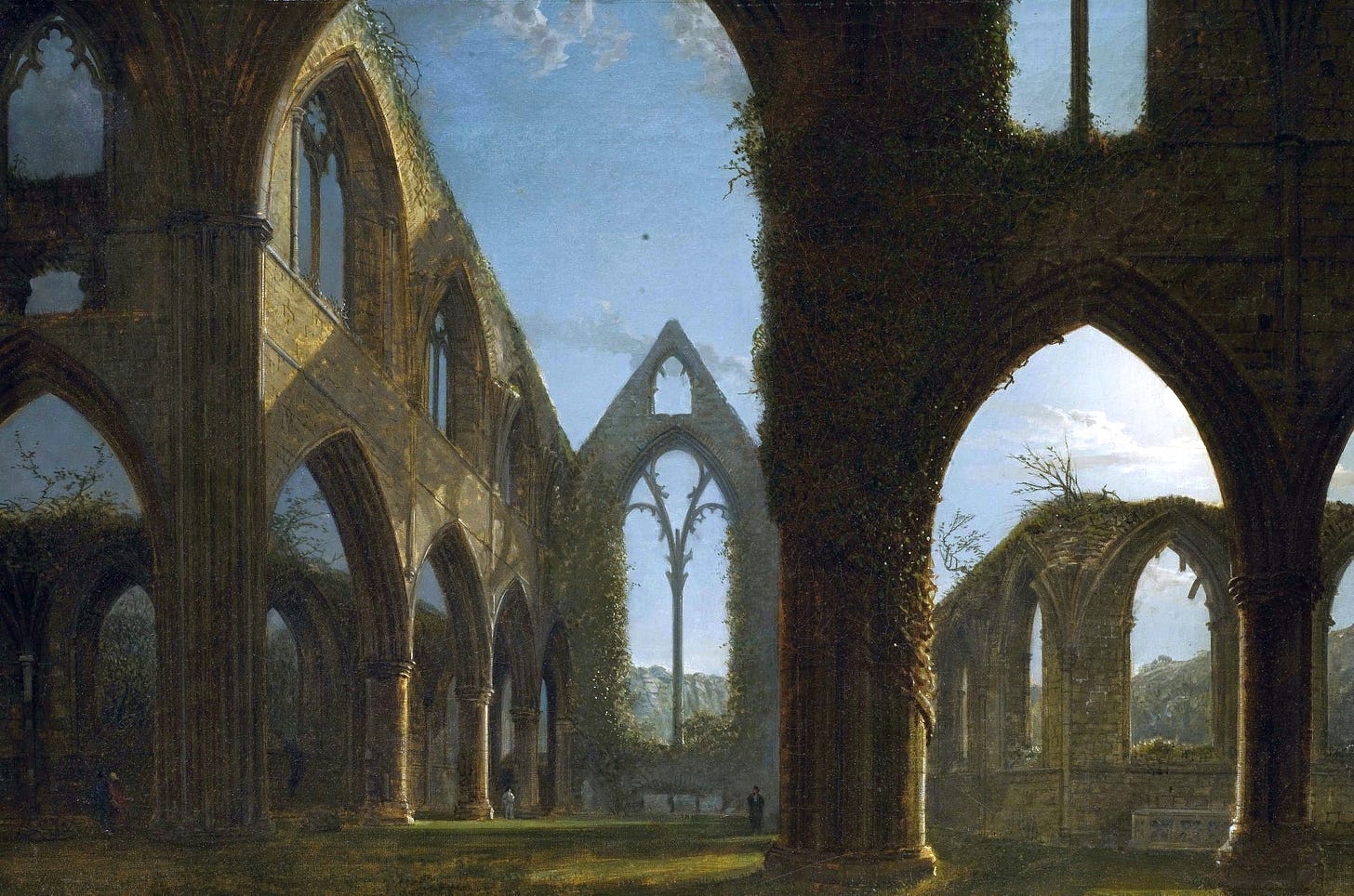A Stone Spectre that Haunts Britain: On Visiting Tintern Abbey
Sebastian Morello's encounter with the ruins of Cistercian genius

A few weeks ago, my father and I made our way to the Royal Forest of Dean to hunt wild boar with heavy calibre centrefire rifles. Arboreous Gloucestershire is one of the few places in England where one can hunt these fearsome creatures—deemed by our ancestors ‘noble quarry’—and in any case the Forest of Dean is the perfect place to hunt them: endless hills covered in thick woodland, rolling over the border into the ancient principality of Wales. There, you find yourself in what remains of wild England.
It is not the hunting on which I wanted to focus, however, but the visit to a very special place that our hunting trip occasioned. For being so close to the Welsh border, it occurred to me that Tintern Abbey wouldn’t be far off, and indeed after a small search on my phone it turned out that the ruined monastery was only a twenty-minute drive away.
Long before Tintern Abbey played the role of catalyst on Wordsworth’s poetic creativity, those ruins had already made their mark on the British imagination. Since the early 18th century, numerous romantics painted the decaying abbey, including William Havell, Benjamin Williams Leader, George Willis-Pryce, Constable’s disciple Frederick W. Watts, and most famously William Turner. Even the German polymath and friend of Goethe, Carl Gustav Carus, travelled into Wales to paint Tintern Abbey during a tour of Britain.

As all the many paintings of Tintern Abbey down the centuries more or less convey, those ruins express an incalculable melancholy, silently condemning this land for its establishment’s five-century-long war on the Holy Ghost. Britain is ever haunted by its Catholic past, and that haunting finds an acute expression at Tintern, where that great stone spectre looms over a silent valley, and time and again people are drawn to linger amid its wreckage and imagine what once was.
In my book Mysticism, Magic, and Monasteries, I developed a case that Britain—and especially England—not only was, but in an odd way remains, essentially Benedictine:
The Benedictines gave to Britain in general, and certainly to England in particular, its unique spirituality. Many of our bishops and archbishops were Benedictines, from St. Dunstan who wrote the British coronation ceremony that not long ago captured the world’s attention with the anointing of King Charles III, to St. Anselm, the first scholastic. […] The English have an especial attachment to their landscape, and they unknowingly listen out for the pounding canter thereon of Camelot’s knightly brotherhood. This attachment to the landscape may be the principal characteristic of Albion’s offspring, and it is likely inherited from the millennium of Benedictine spirituality that animated the religiosity of these isles.
As time rolled on, however, the Benedictine spirituality that Britain especially embraced—and this is a point I did not develop in the book quoted above—was that of the Cistercians.
Keep reading with a 7-day free trial
Subscribe to Tradition and Sanity to keep reading this post and get 7 days of free access to the full post archives.



